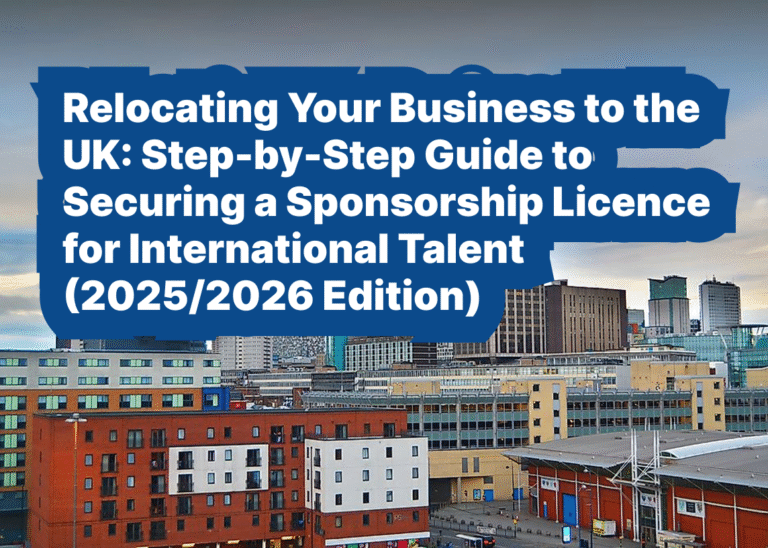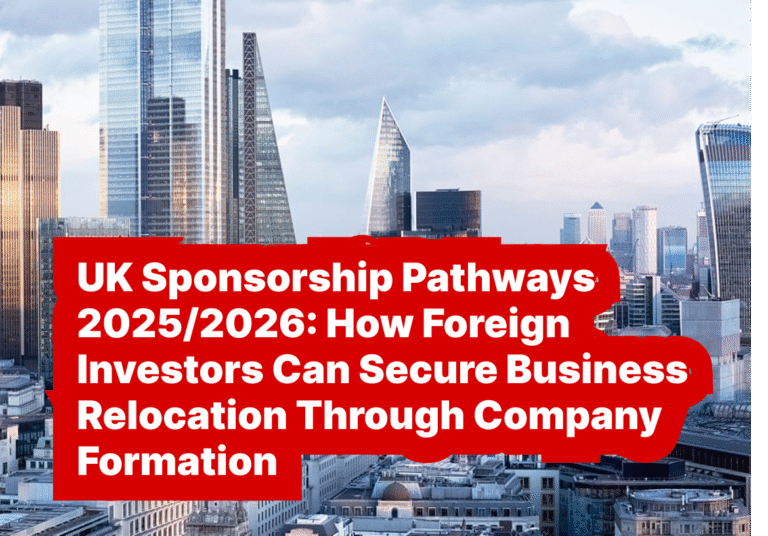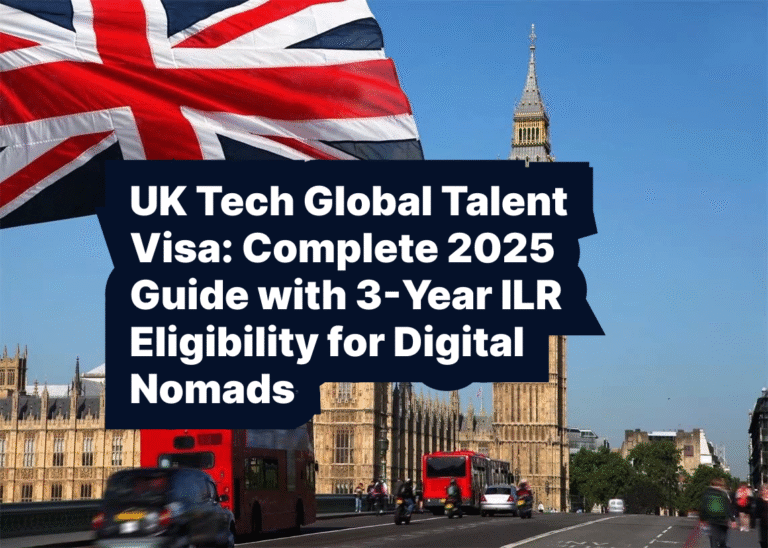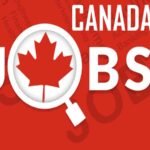Navigating the U.S. visa sponsorship process can be complex and challenging, but with the right knowledge and strategies, you can secure a high-paying job that sponsors your visa. This guide provides a comprehensive roadmap to help professionals understand how employer-sponsored visas work, what qualifications are required, and how to position themselves for success in 2025.
The U.S. remains one of the most sought-after destinations for skilled professionals, offering lucrative job opportunities, career growth, and access to cutting-edge industries. However, due to strict immigration policies and competition, securing visa sponsorship requires careful planning, persistence, and a strong understanding of the process.
How Employer-Sponsored Visas Work
U.S. companies can sponsor foreign nationals for work visas if they possess skills and qualifications that are in high demand and not readily available in the domestic workforce. Employers must demonstrate to the U.S. government that they have made a good faith effort to hire a U.S. citizen or permanent resident before offering the position to a foreign national.
The process typically involves:
- Job Offer – The employer extends a job offer to a qualified foreign national.
- Labor Certification (if applicable) – Some visas require employers to prove that hiring a foreign worker will not negatively impact U.S. job seekers.
- Filing of Petition – The employer submits a petition to the U.S. Citizenship and Immigration Services (USCIS) on behalf of the candidate.
- Visa Approval & Issuance – If approved, the candidate attends a visa interview and, upon successful completion, is granted a visa to work in the U.S.
Why U.S. Companies Are Sponsoring Talent in 2025
The U.S. job market is evolving rapidly, with increasing demand for specialized skills in various sectors such as technology, healthcare, finance, and engineering. Companies are facing a skills gap, making it essential to hire top talent from across the globe to remain competitive. Several factors contribute to this trend:
- Shortage of Skilled Professionals – Industries like artificial intelligence (AI), cybersecurity, and healthcare continue to experience shortages of qualified professionals.
- Globalization of Workforces – Companies are prioritizing diversity and global talent acquisition to drive innovation.
- Government Policy Adjustments – While immigration policies fluctuate, 2025 is expected to see continued employer demand for foreign talent in high-demand sectors.
Do You Qualify? Visa Sponsorship Requirements for High-Paying Roles
To qualify for visa sponsorship, candidates typically need:
- A bachelor’s or master’s degree in a relevant field (STEM, finance, business, etc.).
- Several years of work experience demonstrating expertise in their industry.
- Specialized skills that are in high demand, such as AI development, data science, software engineering, or healthcare expertise.
- A strong track record of accomplishments including certifications, published research, or industry contributions.
A Detailed Look at the Best U.S. Work Visas in 2025
The United States remains a top destination for skilled professionals seeking career advancement and new opportunities. However, navigating the U.S. immigration system can be complex, requiring an understanding of various work visa categories. In 2025, several visa programs cater specifically to skilled professionals who wish to work in the U.S. Below, we explore the most common and sought-after work visas, including eligibility criteria, benefits, and application procedures.
1. H-1B: Specialty Occupations
The H-1B visa is one of the most popular work visas for foreign professionals, particularly in industries such as information technology, engineering, and healthcare. It allows U.S. employers to hire skilled foreign workers in specialty occupations that require a high level of expertise.
Key Features of the H-1B Visa:
- Requires at least a bachelor’s degree or equivalent in a specialized field.
- Capped at 85,000 visas per year, with 65,000 available for general applicants and an additional 20,000 reserved for individuals with a U.S. master’s degree or higher.
- Initial visa duration of three years, extendable up to six years.
- H-1B holders can apply for permanent residency (Green Card) through employer sponsorship.
Challenges and Considerations:
Due to its annual cap, the H-1B visa is highly competitive, with demand often exceeding supply. The selection process involves a lottery system, making it uncertain for many applicants. Additionally, strict employer sponsorship requirements and prevailing wage obligations can limit eligibility.
2. L-1: Intracompany Transferees
The L-1 visa is designed for employees of multinational companies who are being transferred from a foreign office to a U.S. office. This visa category is divided into two subtypes:
- L-1A: For managers and executives.
- L-1B: For employees with specialized knowledge.
Key Features of the L-1 Visa:
- Allows companies to transfer employees within their corporate structure.
- Requires the employee to have worked for the company for at least one continuous year within the past three years.
- L-1A holders can stay for up to seven years, while L-1B holders can stay for up to five years.
- Provides a pathway to a Green Card under the EB-1C category for multinational executives and managers.
Challenges and Considerations:
The L-1 visa requires a strong relationship between the foreign and U.S. entities, including proof of business operations. Additionally, increased scrutiny from U.S. immigration authorities has led to more stringent application requirements.
3. O-1: Individuals with Extraordinary Ability or Achievement
The O-1 visa is reserved for individuals with extraordinary ability in their respective fields, including science, arts, education, business, or athletics. This visa category is ideal for highly accomplished professionals with documented achievements and recognition.
Key Features of the O-1 Visa:
- Requires significant evidence of extraordinary ability, such as awards, publications, or significant contributions to the field.
- No annual cap, allowing for more flexibility compared to the H-1B visa.
- Granted for an initial period of three years, with extensions available in one-year increments.
- Allows for dual intent, meaning applicants can pursue a Green Card while on an O-1 visa.
Challenges and Considerations:
The O-1 visa has stringent eligibility criteria, requiring extensive documentation and strong letters of recommendation. Applicants must demonstrate that they are at the top of their field, making it difficult for less-established professionals to qualify.
4. EB-1: Employment-Based Immigration
The EB-1 visa is a priority employment-based Green Card category, offering a permanent residency pathway for individuals with extraordinary abilities, outstanding professors and researchers, and multinational executives.
Key Features of the EB-1 Visa:
- No labor certification required, expediting the Green Card process.
- Available for three subcategories:
- EB-1A: Individuals with extraordinary ability in sciences, arts, education, business, or athletics.
- EB-1B: Outstanding professors and researchers with international recognition.
- EB-1C: Multinational managers and executives.
- Allows for self-petitioning in the EB-1A category, meaning no employer sponsorship is required.
- Priority processing, making it one of the fastest routes to a Green Card.
Challenges and Considerations:
The EB-1 visa has stringent eligibility requirements, particularly for the EB-1A category. Applicants must provide substantial evidence of extraordinary achievements, making it difficult to qualify without a strong professional background.
Comparing the Best U.S. Work Visas in 2025
| Visa Type | Key Features | Typical Applicants | Duration | Green Card Pathway |
|---|---|---|---|---|
| H-1B | Specialty occupation, capped at 85,000 visas/year | IT professionals, engineers, healthcare workers | 3-6 years | Employer-sponsored EB-2 or EB-3 |
| L-1 | Intracompany transferee for executives/managers/specialized knowledge employees | Multinational employees | 5-7 years | EB-1C for executives and managers |
| O-1 | Extraordinary ability in sciences, arts, education, business | High-achieving professionals, artists, researchers | Initial 3 years, extensions in 1-year increments | EB-1A |
| EB-1 | Employment-based priority Green Card | Extraordinary ability individuals, outstanding researchers, multinational executives | Permanent | Direct Green Card |
Choosing the right U.S. work visa depends on your qualifications, career goals, and employer sponsorship. While the H-1B visa remains a popular option, its annual cap makes it highly competitive. The L-1 visa provides an excellent route for multinational employees, while the O-1 and EB-1 categories cater to high-achieving professionals with extraordinary credentials.
For those seeking a long-term future in the U.S., exploring employment-based Green Cards such as the EB-1 can offer a more secure pathway. Regardless of the visa category, thorough preparation, strong documentation, and employer support are essential for a successful application.
If you are considering working in the U.S. in 2025, consulting with an immigration attorney or professional can help navigate the process and increase your chances of securing the right visa for your career aspirations.
Top Job Boards and Strategies for Finding Sponsored Positions
Finding employers willing to sponsor visas requires strategic job searching. Here are the top resources to leverage:
Job Boards Specializing in Visa Sponsorships:
- LinkedIn Jobs – Use filters to find H-1B sponsorship opportunities.
- H1BGrader – A site that lists companies with a history of visa sponsorship.
- MyVisaJobs – Offers data on employers that have sponsored visas in the past.
- Dice.com – A top site for tech-related jobs with sponsorship options.
- Indeed & Glassdoor – Use keywords like “visa sponsorship” to refine search results.
Job Search Strategies:
- Tailor Your Resume and Cover Letter – Highlight relevant skills, certifications, and accomplishments.
- Network Aggressively – Attend industry events, leverage LinkedIn, and connect with recruiters.
- Target Multinational Companies – Firms with global operations are more likely to sponsor visas.
- Research H-1B Employers – Focus on companies with a strong history of sponsoring work visas.
Industry Spotlight: High-Paying Roles Across Sectors
Visa sponsorship is most common in industries facing critical skill shortages. These sectors include:
- Technology: Software developers, data scientists, cybersecurity experts, AI engineers.
- Healthcare: Physicians, registered nurses, medical researchers.
- Finance: Financial analysts, investment bankers, actuaries.
- Engineering: Mechanical, civil, electrical, and aerospace engineers.
Step-by-Step Process: From Job Offer to Green Card
- Secure a Job Offer – Apply for roles and receive an offer from a sponsoring employer.
- Labor Certification (PERM) (if applicable) – The employer must prove that hiring a foreign worker will not negatively affect U.S. job seekers. This involves filing with the Department of Labor.
- File the I-140 Immigrant Petition – The employer submits a petition to USCIS, establishing the candidate’s eligibility for the visa category.
- Apply for Adjustment of Status or Consular Processing – If already in the U.S., the candidate can apply for an adjustment of status (I-485). If outside the U.S., consular processing through a U.S. embassy is required.
- Attend Biometrics Appointment and Interview – The applicant submits fingerprints, undergoes background checks, and may be called for an in-person interview.
- Receive Visa Approval & Green Card Issuance – Upon approval, the candidate is granted work authorization and, eventually, permanent residency (Green Card).
- Prepare for Relocation and Work Authorization – Once the visa is granted, make necessary travel arrangements and comply with work authorization requirements.
Final Thoughts: Start Your Visa Sponsorship Journey Today
Securing a $120k+ job with U.S. visa sponsorship in 2025 is possible with the right strategy. By understanding the visa process, leveraging job search resources, and positioning yourself effectively, you can achieve your dream of working in the U.S. Start preparing today to increase your chances of success!







